We recently discussed a few different TV shows and movies you can study to improve your writing. This week I wanted to dive deep into one particular film: Nausicaä of the Valley of the Wind.
Though lesser known than Hayao Miyazaki classics like Spirited Away and Princess Mononoke, this 1984 animated film was groundbreaking in many respects. Though it was technically made before Studio Ghibli was founded, it is considered by many to be a Ghibli film that set the stage for the many marvelous movies that came after it. It was also the first collaboration between Miyazaki and the composer Joe Hisaishi, who would go on to write the beautiful and emotional scores of several Studio Ghibli films.
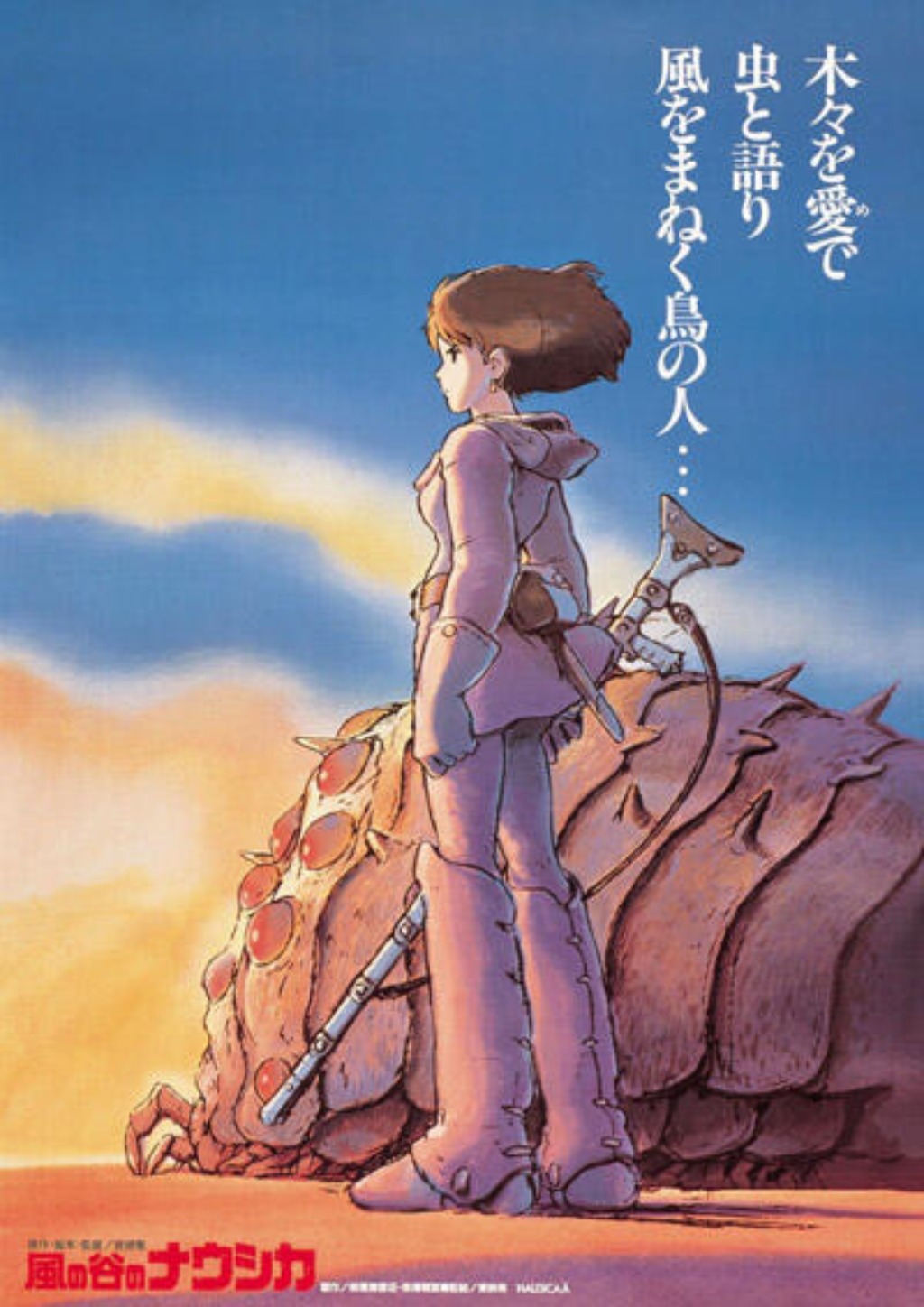
Nausicaä of the Valley of the Wind takes place in a post-apocalyptic future and revolves around Nausicaä, princess of the Valley of the Wind. She gets caught up in a battle with another kingdom that wants to use an ancient weapon to destroy a jungle inhabited by enormous mutant insects. It is a masterpiece in more ways than one, and a close study of it could improve your writing immensely. It’s available on HBO Max—you can still follow along if you don’t have HBO Max and can’t watch, though I do recommend forking over the $14.99 a month if only to have access to the Studio Ghibli catalog.
Here are some of the aspects of the film you can study to strengthen your storytelling skills.
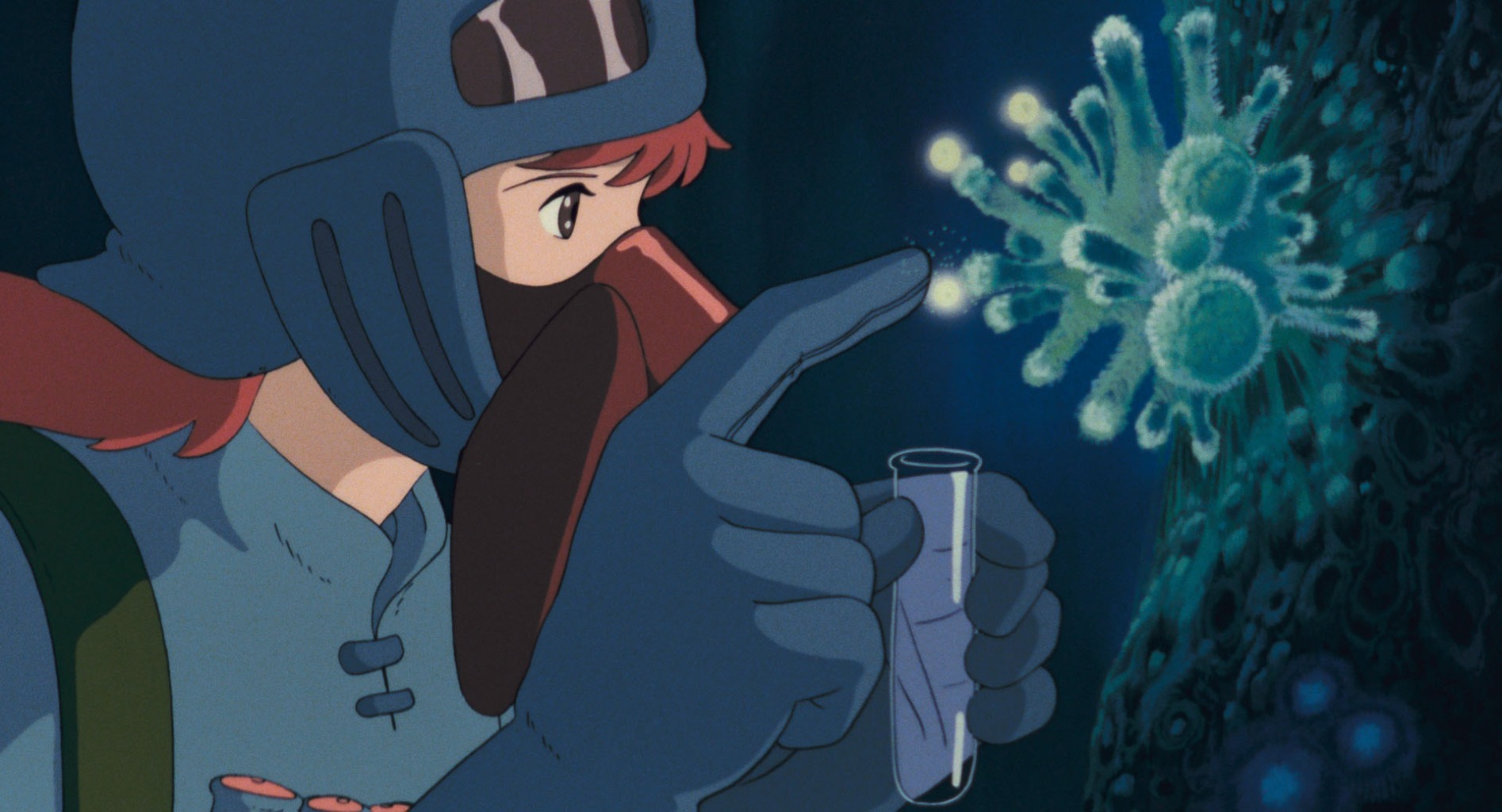
Worldbuilding
Nausicaä of the Valley of the Wind opens with a view of a barren wasteland. A figure wearing an odd-looking mask rides on the back of a large bird and leads another (the birds are also wearing masks). What looks like snow falls from the sky and old buildings are covered in some sort of white webbing. The man breaks into a house, sees a skeleton, and picks up a doll that crumbles to dust in his hand. “Yet another village is dead,” he says. Then we see large insects swarming in the sky, causing the rider to flee, with him expressing concern about the area being consumed by the “toxic jungle”.
So much worldbuilding has already been done in just the first minute and a half of the movie. We know that at least this portion of the world has become inhabitable—the man must wear a mask to breathe, and even his birds must as well. The fact that the man rides a bird shows that we are in a strange world different from our own. Right away we can see that this world is dying, but that there are some—like the rider—who are still striving forward toward survival.
You can watch and learn from this film’s earliest moments how to use atmosphere and telling clues (like the crumbling doll) to set the stage for your story. The next few scenes are just as revealing and continue to build the movie’s complex world in just a few elegant strokes.
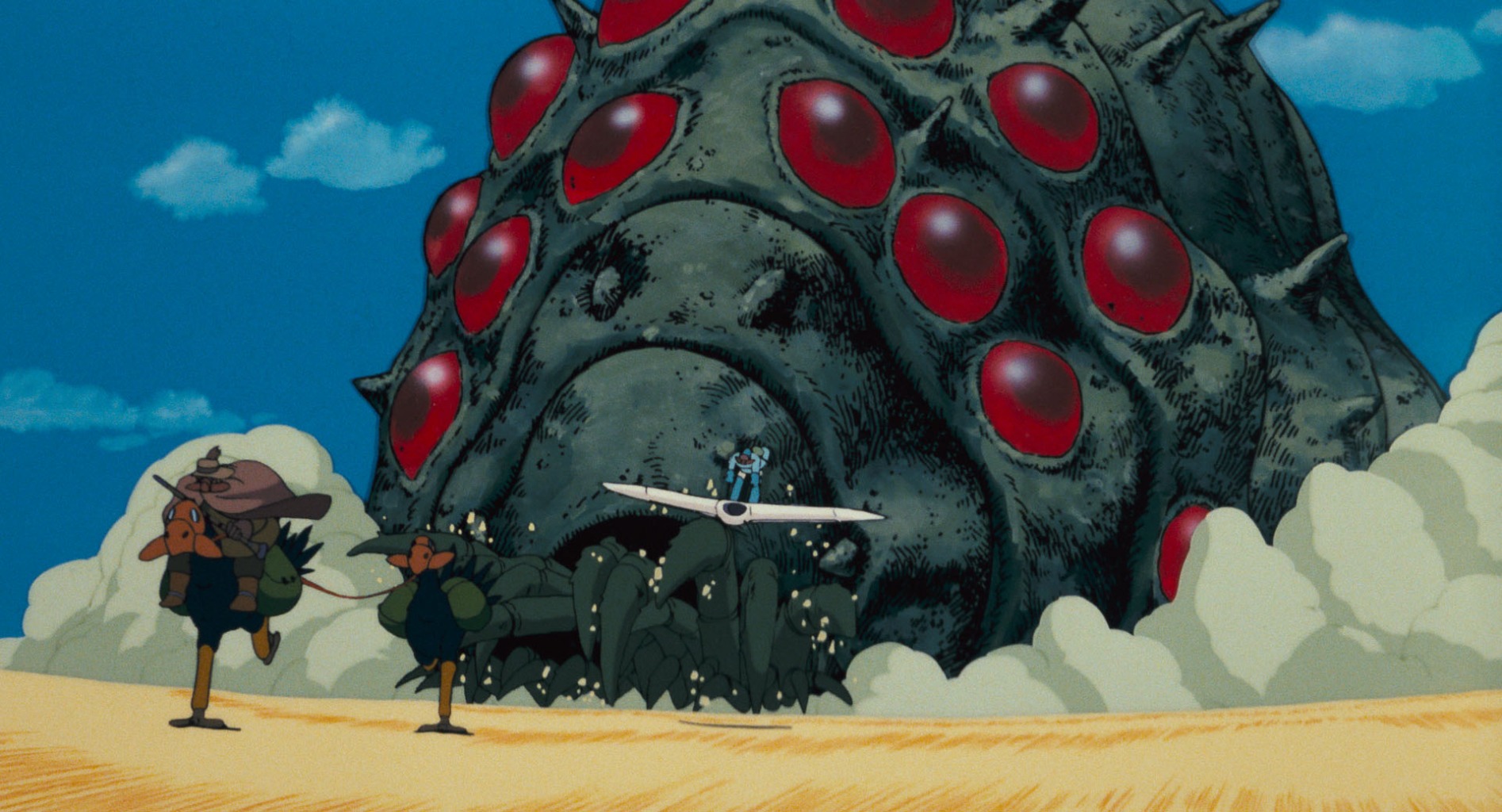
Pacing
Next, we are introduced to Nausicaä, a pretty and resourceful young girl who ventures into the jungle alone to collect spore samples. Less than ten minutes into the film, we hear a gunshot and see an attack on the rider from before by a many-eyed, gigantic insect called an Ohm. Nausicaä launches into action, dropping flash bombs to stop the Ohm and soothe the creature’s anger. Slowly, the Ohm’s angry red eyes turn blue.
From there, the film continues at a breakneck pace from one exciting event to the next. Stories taken up by so much action often tend to lack substance, but tons of rich character development and worldbuilding are all happening at the same time. That is largely due to one of the movie’s most impressive attributes, which we’ll talk about in the next section.
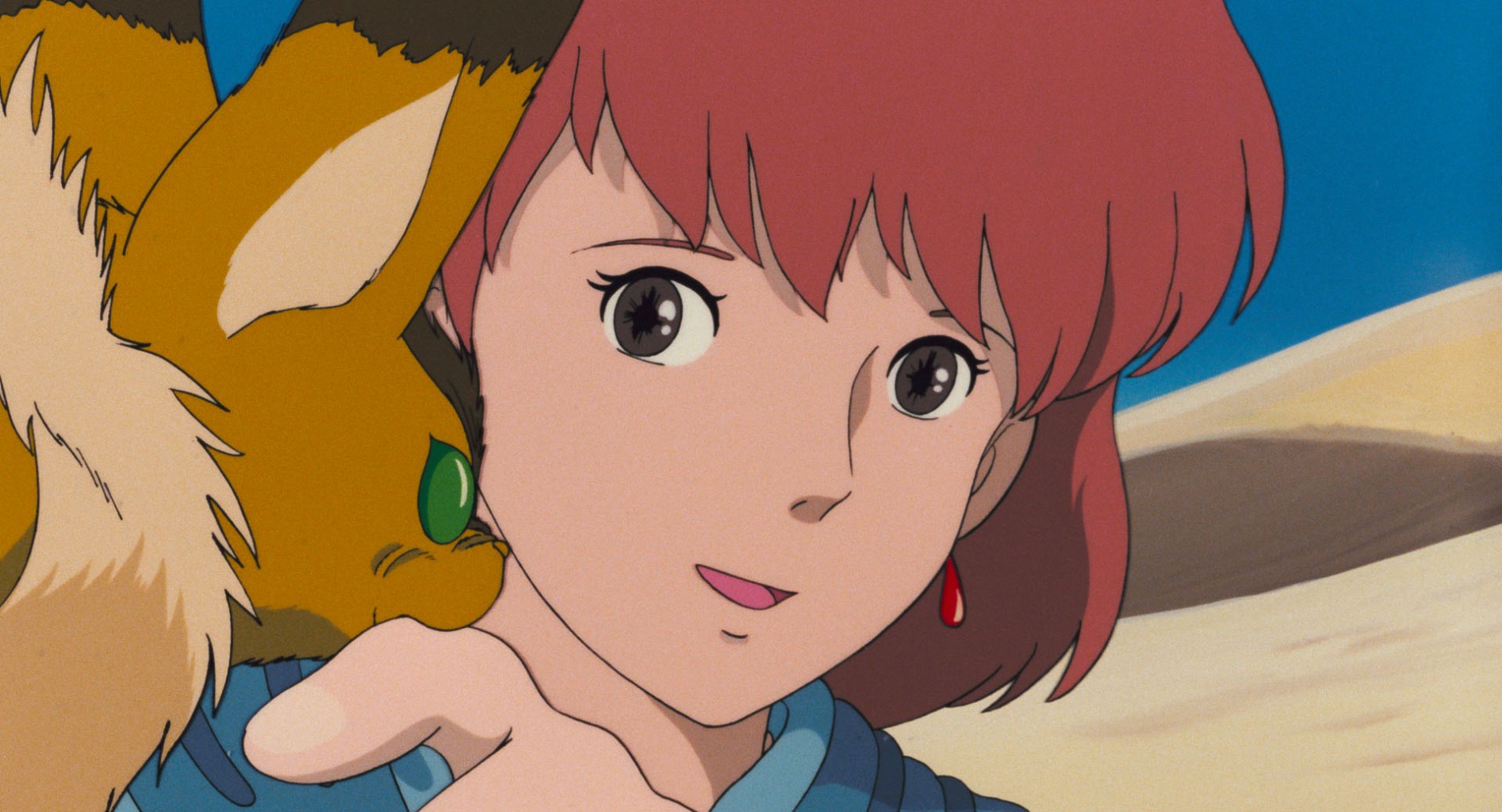
Showing vs. Telling
Much of what we’ve discussed concerning Nausicaä of the Valley of the Wind’s worldbuilding and pacing shows that this film excels at showing rather than telling. Often books will waste pages and pages on tiresome exposition explaining the unique facets of their worlds. But Nausicaä fills you in on those details in mere minutes through its atmosphere, dialogue, and action.
Characters are developed as quickly and expertly as the film’s world. In Nausicaä’s first appearance we immediately learn how brave and selfless she is with the way she rushes in to save the rider (who we learn is an old friend named Lord Yupa) armed with just a few flash grenades, an insect charm, and calming kindness. She further shows her sweetness and love for animals when Lord Yupa gives her a fox squirrel to hold, warning that they are vicious. The fox squirrel immediately bites her, hard. Nausicaä remains calm, and soon the fox squirrel calms as well and licks her wound. Afterward, the creature becomes her cherished pet and sidekick.
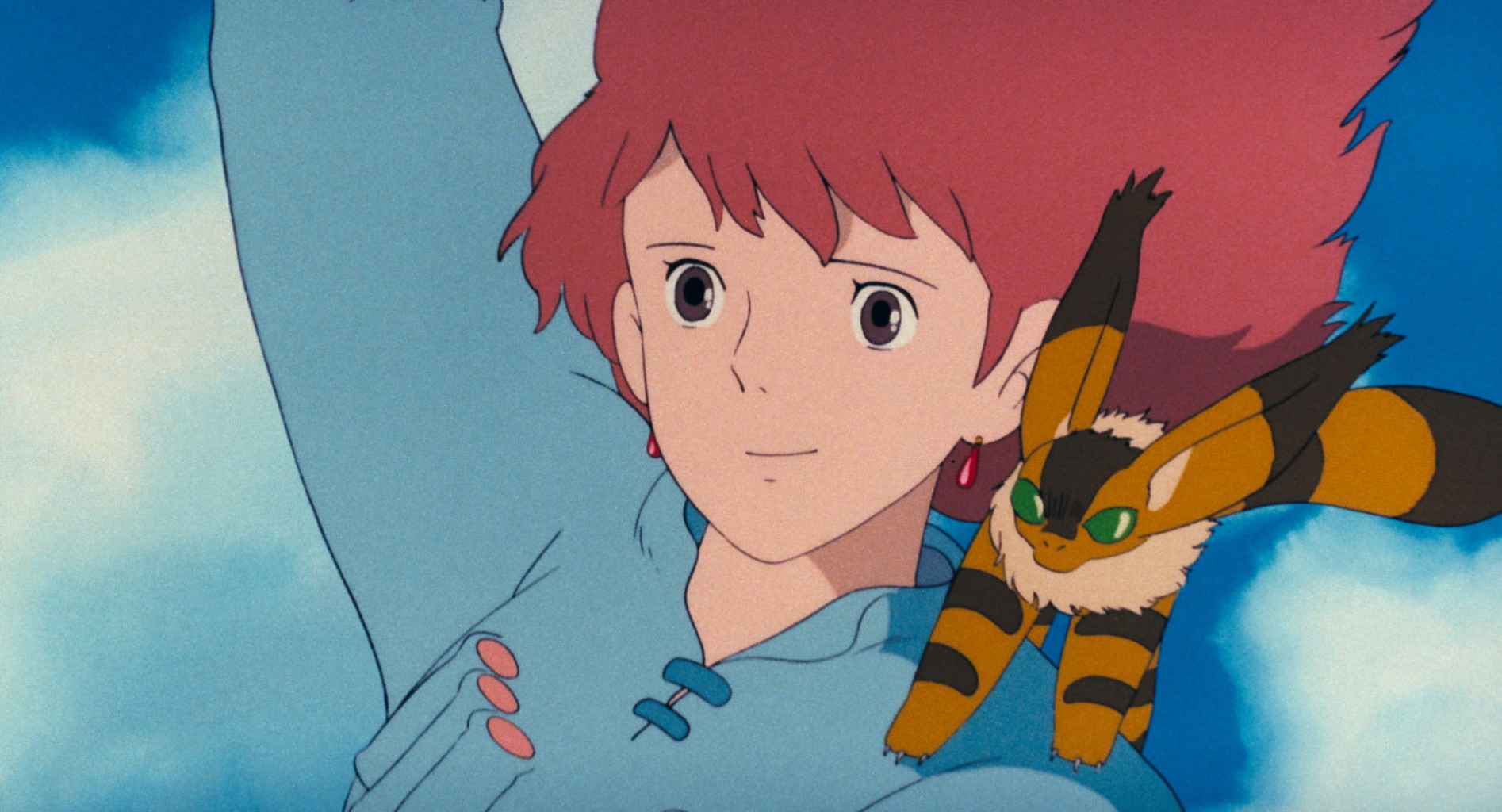
A lesser storyteller would have made the fox squirrel warm to Nausicaä right away. But by having the creature bite her first, Miyazaki shows that the princess is brave and kind enough to understand when an animal is afraid and not to blame them for it. The way the people of her kingdom adore her also shows the strength and goodness of Nausicaä’s character.
Nausicaä of the Valley of the Wind doesn’t waste a moment on flat exposition and instead allows the story’s action to speak for itself. The film tells a wonderful, heartfelt story and is definitely worth watching just for fun. But it can also teach you a lot about how to keep your readers engaged by avoiding lengthy exposition.